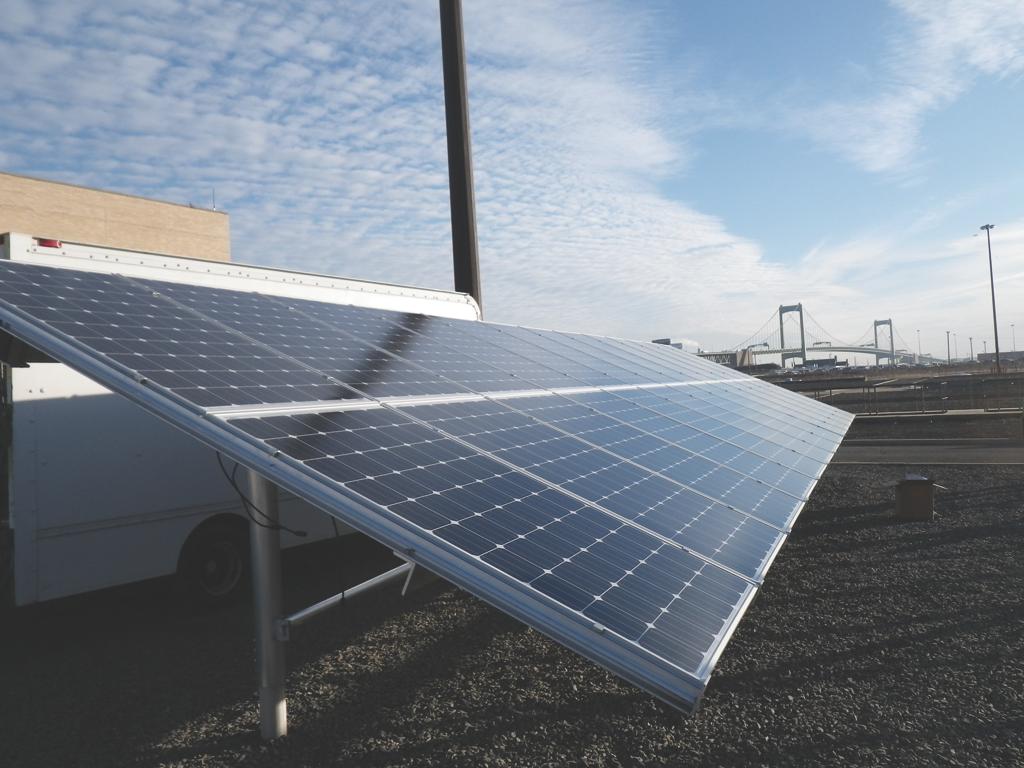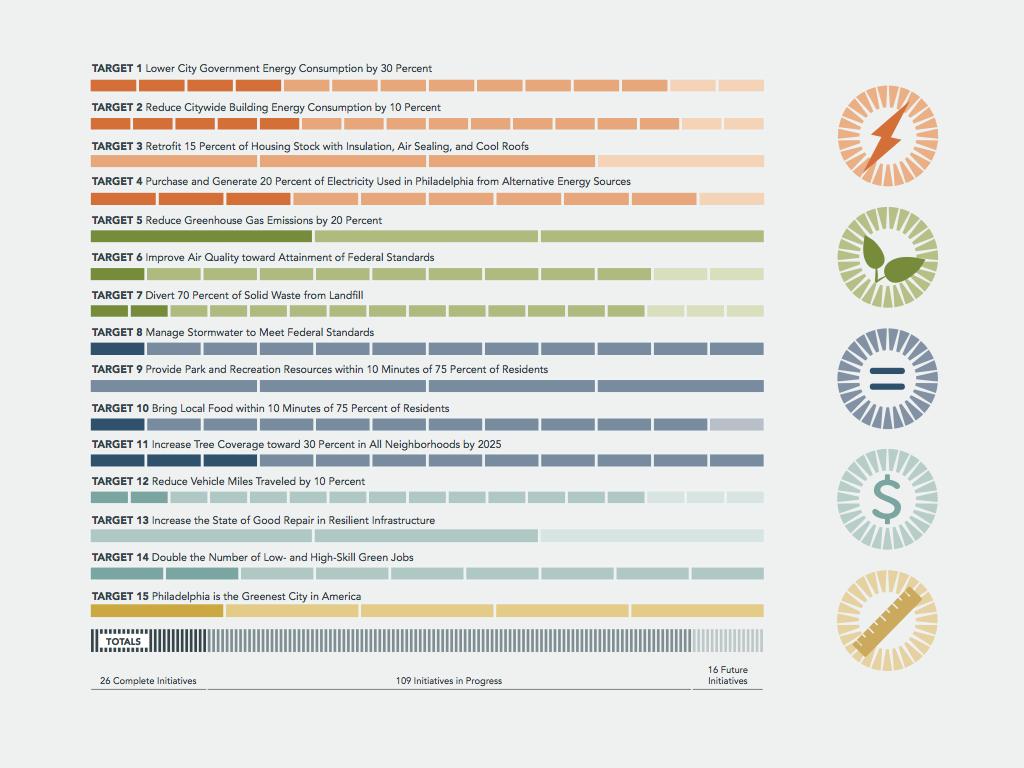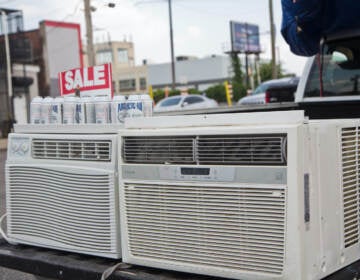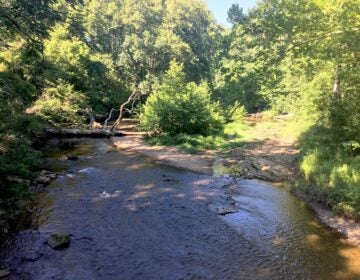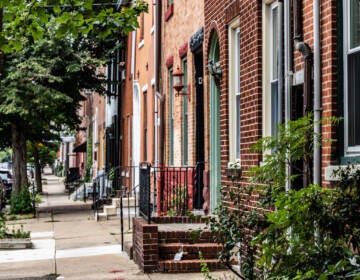Many Greenworks goals have been met or are in progress, but city still must plan for climate change
In the coming year, the city must determine how it will deal with the changing climate, Katherine Gajewski, director of the city’s office of sustainability, told Planning Commissioners at its Tuesday meeting.
Gajewski gave a progress report on the city’s environmental mission statement, Greenworks Philadlephia. The majority of the environmental initiatives the document calls for have already been achieved (26 of them) or are now in progress (109), she said. Percy Street was recently paved with porous pavement. The city’s recycling rate, spurred along with an incentive program, has hit 30 percent, up from 5 percent three years ago. The water department now operates a solar array. A region-wide energy efficiency fund offers low-interest loans to residential and commercial energy efficiency projects. An on-going retrofit of 85,000 city traffic lights with LED bulbs will save $1 million a year in utility bills and, because they require less frequent bulb changes, workers will have more time for other projects.
In coming months, her office will be working with other city departments and outside entities to do more. Through a partnership with Philly Car Share, about 20 new electric vehicles will be brought into the car share fleet this fall, she said. After the meeting, Stacey Graham, legislative counsel to City Councilman-At-Large Bill Green, said that the use of electric cars may not be feasible in all Philadelphia neighborhoods. Some streets are too narrow for parking, Graham said, and so cars could not be charged at some residents’ homes. She also said that before the city invests in creating any electric car infrastructure, the environmental impact of exchanging gas powered vehicles for electric ones should be thoroughly examined. If electricity is generated with fossil fuels, she said, it may not make much difference.
Greenworks will be working with urban farmers and gardeners to make it easier to grow things on vacant city lots, Gajewski said. The city recently got a better idea of where it stands regarding tree canopy coverage, she said, thanks to a survey completed by Parks and Rec with the help of aerial photography, among other methods. “The canopy is stronger than we thought,” she said. But the city still intends to plant about 250,000 more trees, which help clean and cool the air. The greatest opportunity for planting is on the privately owned land of institutions and residences, Gajewski said. The city is working on an incentive program to foster more tree planting. Other places have used tree-purchasing coupons, for example.
But even while the city continues its efforts to improve and protect the environment and mitigate climate change, Grajewski said, it must also establish a plan to deal with climate change and create “climate adaptation strategies,” she said. Other major cities have already looked at how they would deal with rising temperatures and water levels, she said. This is one of the areas in which she will be turning to the planning commission for guidance and ideas, she said.
“We are interested in an analysis of predicted trends/impacts and the risks that climate change present to the city and region,” she told PlanPhilly in a later email. “In addition, we also hope to develop a climate change adaptation plan that identifies and quantifies existing mitigation strategies, along with recommendations for future actions and processes that will help to address and reduce the negative impacts of climate change.”
The work will have to be long-term and ongoing in scope, she said. “Greenworks presents many mitigation and adaptation strategies, but is not a dedicated climate change adaptation plan.”
Reach the reporter at kgates@planphilly.com
WHYY is your source for fact-based, in-depth journalism and information. As a nonprofit organization, we rely on financial support from readers like you. Please give today.



